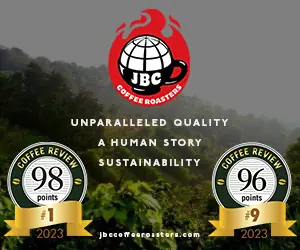The thirty Guatemala coffees we sampled for this month’s article overall were remarkably true to form for this storied and celebrated origin. For the most part they were beautifully structured and balanced, yet surprising and original in detail. Most likely it is the traditionalist nature of Guatemala coffee production – the often unpredictable mix of traditional varieties of Arabica making up Guatemalan coffee groves and the producers’ loyalty to locally traditional methods of fruit removal – that together encouraged the subtle and engaging variations on the classic wet-processed cup we encountered among this month’s samples. True, Guatemala coffee-growing terroirs are more varied than those in most other Central America origins, but with this month’s samples the differentiating (and often hypothetical) impact on cup created by terroir appeared to be largely overridden by the more obvious impact of botanical variety and processing variations.
Despite the comforting reassurance that the great Guatemala wet-processed cup continues as it has for decades in its suave structure and subtle aromatic variety, there were signs of change hinted at by the thirty-some coffees we cupped.
Experiments with Variety though not with Processing
One clear sign of change was grower experimentation with botanical variety. In addition to coffees produced from the usual (though variable) mix of Bourbon, Typica and Caturra varieties that traditionally constitute Guatemala production, we received several samples consisting entirely of coffee from varieties that until recently were not at all typical of Guatemala production: We tested samples of the trendy and spectacular Gesha variety, for example, and samples of the bold-beaned, often distinctive-cupping Pacamara hybrid, a variety most associated with El Salvador. We also had a sample produced from an unusual hybrid of Maragogipe and Caturra called Maracaturra, and a splendid heirloom yellow Bourbon.
But despite the signs of growers’ efforts to differentiate by botanical variety, we received only one sample representing an experiment with an alternative processing method. We tested only one dried-in-the-fruit natural and no dried-in-the-pulp honey coffees at all, both types that are increasingly popular in Costa Rica and Panama, for example. Perhaps this is an indication that Guatemala producers continue to be loyal to their local traditions in orthodox processing, however much some are willing to experiment with botanical variety.
The Coffee Rust Threat and Certified Coffees
On the negative, more challenging side of change, Guatemala, like all of Central America, is suffering from a devastating outbreak of leaf rust, or roya, a fungal disease that in the past has decimated entire coffee industries and for which there is no simple prevention or fix. The latest outbreak in Latin American countries may be a one-time anomaly, or it could be a permanent and utterly depressing symptom of climate change owing to global warming. The information filtering out of Guatemala suggests that producers who pursue organic agriculture have been more heavily hit by rust than farmers who pursue conventional agriculture, and small-holding farmers who can’t afford chemical treatment of their trees have been even harder hit.
If so, this may explain the relative low number of certified organic and Fair-Trade samples we received for this month’s cupping. Guatemala, like southern Mexico, is notable for its many cooperatives of small holding farmers, many of which specialize in organic coffees. These cooperatives often represent communities of indigenous peoples who maintain their local culture and languages. For me, these cooperatives, with their seldom pure but often engaging and distinctive coffees, are one of the treasures of the specialty coffee world. I hope that the relatively low turnout of organic coffees this month is not owing to setbacks caused by the rust outbreak, though I fear it is.
An alternative explanation for the relatively small number of organic/Fair Trade coffees submitted this month is that organic/Fair Trade certification is no longer the market differentiator it once was for small roasting companies. Organic/Fair Trade has entered the main stream of coffee selling, while the “Direct Trade” model of partnerships between producers and roasters focused on producing very distinctive coffees regardless of certification has become the new market differentiator for smaller elite roasters.
The three organic and Fair-Trade coffees Guatemalas we did test were impressive, however. All rated 90. They include the Higher Grounds Medium Roast Guatemala Rio Azul, the Thanksgiving Coffee Guatemala Guaya’b, and, reviewed here, the Café Virtuoso Guatemala FTO.
The Top Ten and Tradition
The remaining ten coffees we reviewed all scored 91 or higher, led by the amazing Revel Guatemala Acatenango Gesha at 95. We try not to review two coffees by the same roasting company in the same article, so we left out two other 91-plus coffees, the Klatch Guatemala Huehuetenango and the Z&Z Gesha La Hermosa Acatenango. Both roasting companies appear in the reviews with higher or similarly rated coffees, the Klatch Guatemala Covadonga at 93 and the Z&Z “The Peach” Antigua at 91.
As I indicated earlier, all but one of the coffees we tested were processed by variations on the wet or washed method, in which the skin and fruit pulp are removed from the seeds or beans before they are dried. Although it is impossible to determine nuances of such fruit removal by cup alone, the complexity and variety of the sensory profiles of most of the samples we tested suggested fruit removal was conducted by the traditional ferment and wash method, wherein the sticky fruit pulp is loosened through natural fermentation before being washed off in channels or scrubbed off by machine. The fermentation step, particularly “dry” fermentation as it is often practiced in Guatemala (no additional water is added to the ferment tanks) often appears to add sensory depth and aromatic complication to the final cup.
More on the Variety Experiments
Further diversity of cup in this month’s samples was promoted by botanical variety. Although four roasting companies sent samples of the spectacular Gesha variety, and although all four are from the same region, only one, the 95-rated Revel Coffee Acatenango Gesha, really took off with the soaring floral, sweet citrus and crisp cacao character we associate with the Gesha variety. Either the roast profiles did not quite fully develop the aromatic potential of these other three Geshas, which we rated 90 to 91, or the various lots were slightly but crucially different.
Aficionados of the impact of variety on cup character may also be interested in sampling the Bird Rock Finca El Guatelon Pacamara (91), which displays the savory depth and brisk bittersweetness typical of many Pacamaras, or the deep-toned, juicily pungent Yellow Bourbon from Seattle Coffee Works (93).










